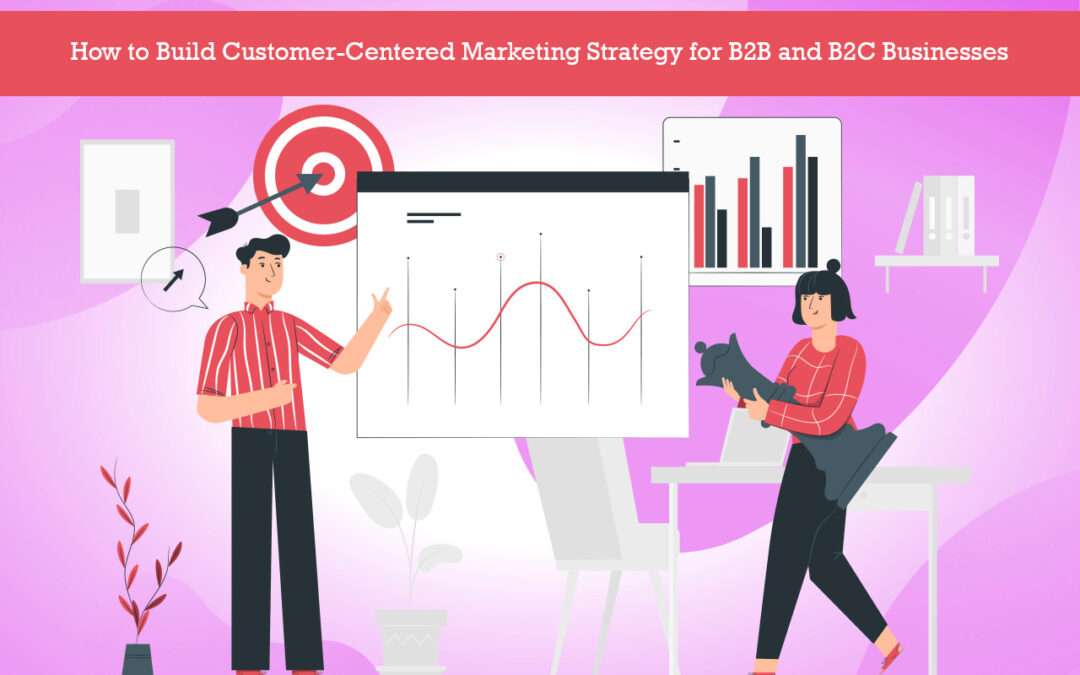What are B2B and B2C marketing strategies?
the consumer is the crucial part of your marketing strategy’s success. An all-encompassing consideration of your consumer should be at the heart of all you do and everything your organization performs.
Why marketing strategy?
We know that the way purchasers select to buy has changed drastically because of the digital marketing tools and platforms.
However, understanding consumer behavior pattern is very much essential. We are aware of the fact that consumers are more powerful, and they’re more likely to conduct internet research before buying any product from any online or offline store.
So, the fate of marketing campaigns and sales pipelines is now largely in the hands of the buyer, thanks to digital technologies.
Despite this shift in power or the transition, a huge proportion of businesses have yet to embrace a customer-centric marketing strategy in order be successful.
How to Build Customer-Centered Marketing Strategy for B2B and B2C Businesses?

1. Influencers
The first phase in this modern digital marketing plan is to establish good relationships with industry influencers. These are no doubt the people that your potential consumers believe in, who they listen to, and also who they learn from.
Associating with these people not only boosts your visibility but also boosts your credibility. Peer referrals generate more than twice the sales of paid advertising.
Influencer marketing has the potential to humanize your brand and create organic customer involvement; the challenge is to precisely identify the influencers, or “smarty pants people,” in your buyer’s environment who can help you improve your product.
Who are the blogs covering the Internet of Things (IoT) if you’re selling in that space? Regardless of whether you’re utilizing it or not.
Who are the blogs covering the Internet of Things (IoT) if you’re selling in that space?
You should look for thought leaders, practitioners, and early adopters whether you’re utilizing LinkedIn or social listening technologies.
If someone in their business has authority, they have influence, and that influence may help you magnify your message and become more visible and credible to a larger audience.
Marketers aren’t the only ones that gain from reaching out to and connecting with influencers.
Salespeople are increasingly becoming deep Subject Matter Experts in their efforts to add actual value and educate the buyer, and they should be learning from “smarty pants people” as well!
2. Content
Modern shoppers who are self-assured are actively seeking information and striving to find relevant content for digital marketing.
Traditional marketing strategies aren’t working as purchasers turn to search engines and social media to self-educate through digital content consumption. The crucial question is: what kind of material are you looking for? After all, no one is going to Tweet your spreadsheet!
It’s crucial to match content not just to different stages of the buying process, but also to unique buyer personas because the types of material that will engage and encourage them will differ based on multiple factors like quality and preferences. If your buyer is highly technical, they will seek out content that is similarly highly technical. That same technically-oriented content won’t appeal to them if they’re extremely strategic.
If your buyer is highly technical, they will seek out content that is similarly highly technical. The same technically-oriented content won’t resonate with them in the same way if they’re very strategic.
3. Community
I am a firm believer in ecosystems and collaborative efforts. For example, at Eloqua, we created the Topliners community. It was an interactive online environment where our consumers could communicate, our workers could be engaged, and our partners could be informed. We shared motivational success stories, organized helpful forums, and produced educational materials. To bring our community together, we even held offline activities.
We were able to separate our community depending on the industry, area, and whether they were B2B or B2C, in addition to encouraging beneficial conversation.
We were able to create thorough consumer personas as a result of this, and we were able to better grasp what they cared about and the issues they encountered.
We not only facilitated the consumer dialogue, but we also listened and participated.
We were able to create thorough consumer personas as a result of this, and we were able to better grasp what they cared about and the issues they encountered.
We not only facilitated the consumer dialogue, but we also listened and participated. When properly nurtured, a community can promote genuine sharing, learning, teaching, and participation.
You must design your entire process to promote advocacy if you want to convert a potential buyer into an actual advocate.
Advocacy isn’t something that happens by accident. You’ll need to create emotional experiences. Make your consumers want to advocate for you by being an advocate for them.
Hence is it being important to prepare a consumer-centric digital marketing strategy.

